Our Rich History
A living piece of Woodbridge history, The Bull is a historic inn, with architectural features dating the building to the early 16th century.
1000s
Early Woodbridge
Woodbridge has a rich and deep history with inhabitants going back millenia. Neolithic records exist and more recently records going back to Roman and Norman times.
St Mary’s Church is mentioned in the Domesday book (1086) although the current St Mary’s was rebuilt in the 15th century. The Market Square was in use during this time.
A priory was established in the 12th century, and the monks formally obtained a license for the market in 1224. The historic centre of Woodbridge revolved around Market Hill and there are records of many inns around the square going back to the 12th century.
St Mary’s Church is mentioned in the Domesday book (1086) although the current St Mary’s was rebuilt in the 15th century. The Market Square was in use during this time.
A priory was established in the 12th century, and the monks formally obtained a license for the market in 1224. The historic centre of Woodbridge revolved around Market Hill and there are records of many inns around the square going back to the 12th century.
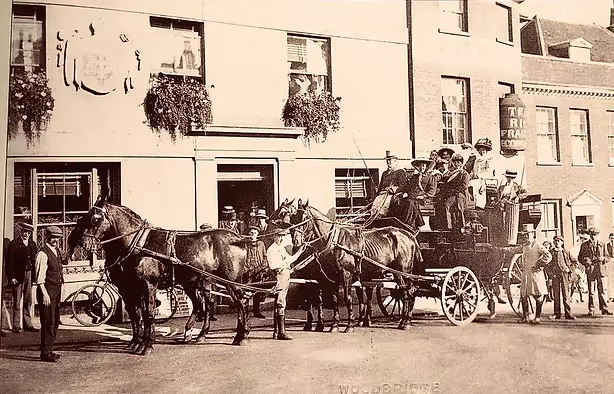
1500s
A Living Piece of Woodbridge History
The Bull also has a rich history, with architectural features dating the building to the early 16th century. Woodbridge was a major trading and shipbuilding town at this point and a lot of the square was rebuilt at this time in a Tudor style due to the influence of Thomas Seckford. The Bull was rebuilt during this time and the medieval building extended and updated.
Near reception, visitors can see sections of wattle and daub believed to predate the Tudor structure. These remnants may offer a glimpse into an even earlier phase of the building’s history.
Near reception, visitors can see sections of wattle and daub believed to predate the Tudor structure. These remnants may offer a glimpse into an even earlier phase of the building’s history.
The Medieval Screen
One of its most remarkable surviving features is the medieval timber screen at the entrance. Believed to have been crafted in the early Tudor period, its battlemented detailing suggests a date in the early 1500s. This screen was designed for a cross-passage layout, typical of the time, and stands in its original position—an increasingly rare piece.
Another curiosity from the same era can be found in the cellar: a few remaining “bee holes”, small alcoves once used to store and protect beehives during harsh winters. The early Tudor period was marked by severe cold snaps—so extreme that even the River Thames famously froze over for weeks.
Another curiosity from the same era can be found in the cellar: a few remaining “bee holes”, small alcoves once used to store and protect beehives during harsh winters. The early Tudor period was marked by severe cold snaps—so extreme that even the River Thames famously froze over for weeks.

1726
Earliest written reference to The Bull Inn
The earliest known written reference to The Bull appears in The Ipswich Journal in October 1726, mentioning landlord William Cooper. Even at that time, The Bull was already referred to as an "ancient inn".
Prior to that, local records show that George Carlow, who lived from 1660 to 1738, resided in a property to the rear of the courtyard stables. During this period, The Bull was operating as a coaching inn, with stables surrounding the rear courtyard. The Inn served as a regular stop on the Union Stage route from London through Ipswich to Norwich and on to the great Victorian sea side resort of Great Yarmouth.
Prior to that, local records show that George Carlow, who lived from 1660 to 1738, resided in a property to the rear of the courtyard stables. During this period, The Bull was operating as a coaching inn, with stables surrounding the rear courtyard. The Inn served as a regular stop on the Union Stage route from London through Ipswich to Norwich and on to the great Victorian sea side resort of Great Yarmouth.

1738
George Carlow
George Carlow was a broker and lived to the rear of The Bull up until his death in 1738. He was born around 1660.
From articles in the Woodbridge Reporter, it seems that George was a kind, benevolent and generous man. However, he did have nickname as ‘Pious George’.
George Carlow was a member of a religious sect long extinct called the Separate Congregation who believed in keeping Saturday sacred. Sunday was fine for getting dressed in your best and going to church, but Saturday was purely a day of rest. Carlow even had a book published – ‘A Defence of the Sabbath’ – which is available on Amazon for those that are interested!
Being not accepted for burial in the church or chapel, he therefore was interred in his own private tomb in his garden. During the expansion of The Bull in the John Grout years, this property was purchased by The Bull. It was probably with some amusement that John Grout converted the property into a ‘brewhouse’. Pious George would surely not have approved.
Despite the ongoing property development, nobody has dared move the tomb, probably because of the inscription;
From articles in the Woodbridge Reporter, it seems that George was a kind, benevolent and generous man. However, he did have nickname as ‘Pious George’.
George Carlow was a member of a religious sect long extinct called the Separate Congregation who believed in keeping Saturday sacred. Sunday was fine for getting dressed in your best and going to church, but Saturday was purely a day of rest. Carlow even had a book published – ‘A Defence of the Sabbath’ – which is available on Amazon for those that are interested!
Being not accepted for burial in the church or chapel, he therefore was interred in his own private tomb in his garden. During the expansion of The Bull in the John Grout years, this property was purchased by The Bull. It was probably with some amusement that John Grout converted the property into a ‘brewhouse’. Pious George would surely not have approved.
Despite the ongoing property development, nobody has dared move the tomb, probably because of the inscription;
“Weep for me dear friend no more for I am gone a little before.
But by a lite of pity prepare yourself to follow me.
Good friends for Jesus sake forbear.
To move the dust entombed here.
Blessed be he that spares these stones.
Cursed be he that moves my bones.”
But by a lite of pity prepare yourself to follow me.
Good friends for Jesus sake forbear.
To move the dust entombed here.
Blessed be he that spares these stones.
Cursed be he that moves my bones.”
You will find that George Carlow still lives on today and the function room at the rear of The Bull is called ‘Carlow’s Room’.
We also follow the rather eccentric tradition of Carlow’s Dole on or near to Candlemas Day each year. Whilst 20 shillings was sufficient to buy 120 loaves back in 1738 for the poor of Woodbridge, the custom is now followed with bread rolls and jam for the class of a local school supported by the Rector and Churchwarden’s of St Mary’s.
We also follow the rather eccentric tradition of Carlow’s Dole on or near to Candlemas Day each year. Whilst 20 shillings was sufficient to buy 120 loaves back in 1738 for the poor of Woodbridge, the custom is now followed with bread rolls and jam for the class of a local school supported by the Rector and Churchwarden’s of St Mary’s.
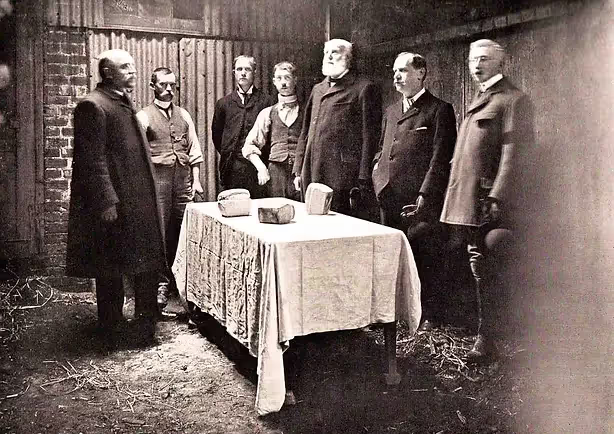
Loaves of bread being distributed according to Carlow's Dole in 1905
1859
John Grout
From 1859 to 1887, John Grout was the landlord. Grout was a world-renowned horse dealer who was very popular in the town bringing much employment as well as attracting the rich and famous.
The Bull Ride stables once supplied horses to almost every crowned head of Europe, including the King of Italy who frequently stayed at The Bull on horse-buying expeditions. For many years, the front of The Bull included the coat of arms of the Italian royal family.
Further notables who have stayed at the Bull include representatives of the Kaiser and the Viceroy of India, who came to buy horses for the imperial and vice-regal stables.
John Grout’s equine fame attracted the rich and famous of Victorian society including The Duke of Westminster and Baroness Burdett-Coutts.
The Bull Ride stables once supplied horses to almost every crowned head of Europe, including the King of Italy who frequently stayed at The Bull on horse-buying expeditions. For many years, the front of The Bull included the coat of arms of the Italian royal family.
Further notables who have stayed at the Bull include representatives of the Kaiser and the Viceroy of India, who came to buy horses for the imperial and vice-regal stables.
John Grout’s equine fame attracted the rich and famous of Victorian society including The Duke of Westminster and Baroness Burdett-Coutts.
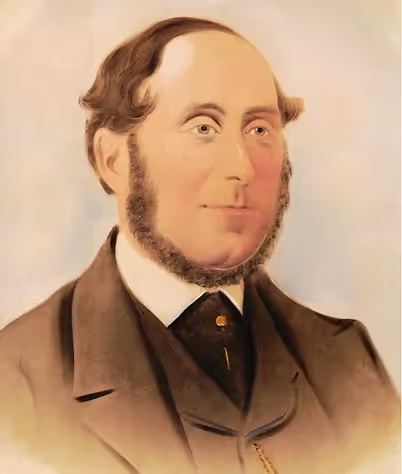
John Grout, landlord of The Bull from 1859 to 1887
Golden age of art
During this time, which was a golden age of art for Woodbridge, John Grout was also a good friend of Edward FitzGerald who had just published The Rubaiyat of Omar Khayyam. Edward FitzGerald’s literary fame would take many years to develop and John Grout was certainly the more popular and famous figure.
For 14 years, Edward FitzGerald, lived opposite The Bull at number 10 Market Hill and he often entertained his fellow artistic luminaries of the day at The Bull. One famous friend and resident was the Poet Laureate, Alfred Lord Tennyson.
John Grout was not overly impressed with the Poet Laureate and commented that ‘he might be a very good poet but he doesn’t know a damned thing about horses’
For 14 years, Edward FitzGerald, lived opposite The Bull at number 10 Market Hill and he often entertained his fellow artistic luminaries of the day at The Bull. One famous friend and resident was the Poet Laureate, Alfred Lord Tennyson.
John Grout was not overly impressed with the Poet Laureate and commented that ‘he might be a very good poet but he doesn’t know a damned thing about horses’
.avif)
The Woodbridge Wits Meetings
1860
Edward Fitzgerald
The late 19th century marked a high point for both Woodbridge and The Bull. The town gained cultural acclaim thanks to Edward FitzGerald’s celebrated translation of The Rubáiyát of Omar Khayyám, which attracted artists and writers from across the country. At the same time, John Grout, an internationally renowned horse dealer based at The Bull, brought further prestige to the inn—welcoming royalty and dignitaries from around the world who travelled to Woodbridge to buy his horses.
During this golden era, The Bull was granted permission to display the House of Savoy coat of arms by the King of Italy, a rare and distinguished honour.
During this golden era, The Bull was granted permission to display the House of Savoy coat of arms by the King of Italy, a rare and distinguished honour.
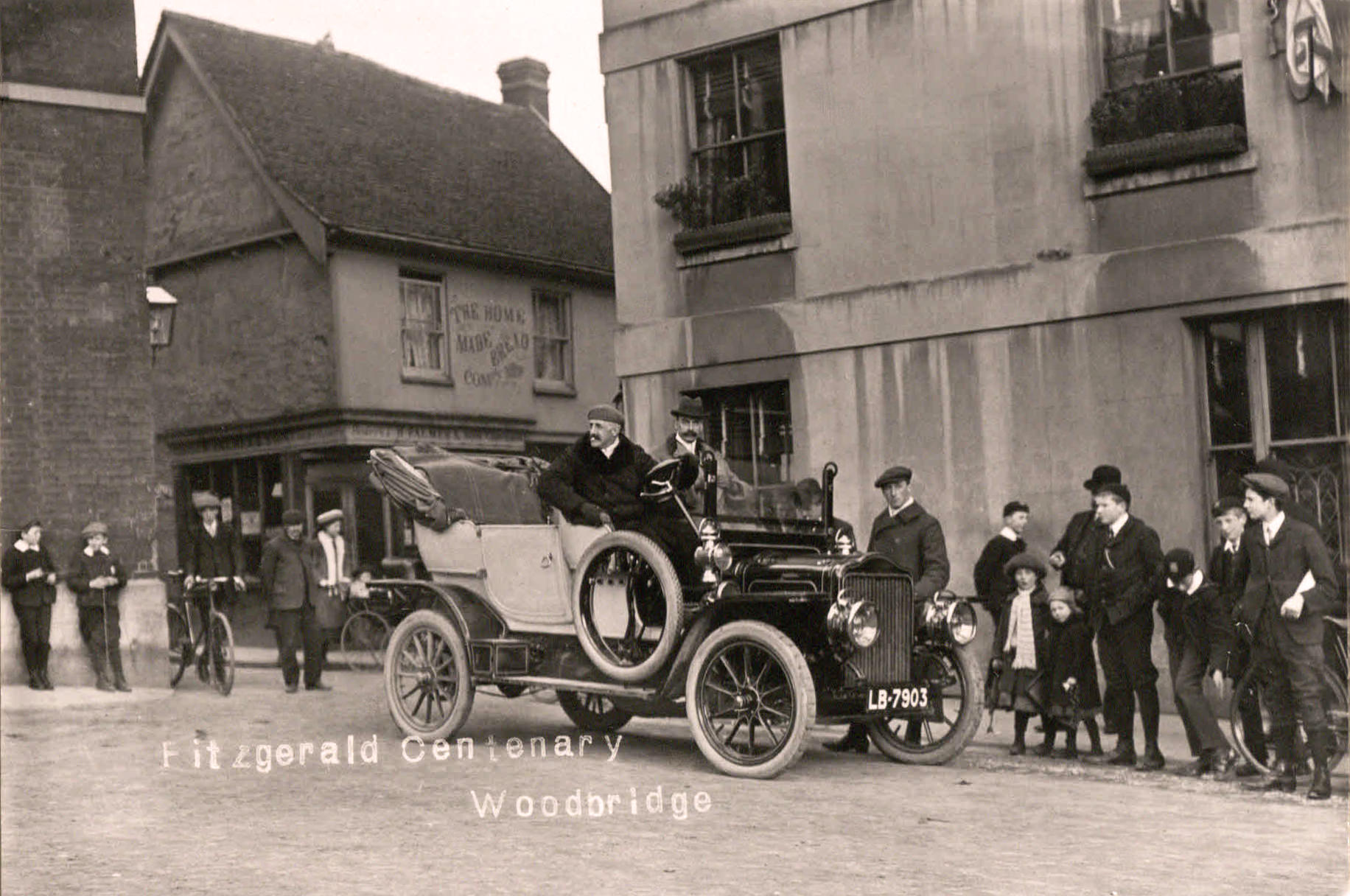
1873
King Umberto I
King Umberto I originally visited The Bull in 1873 and again in 1875 to purchase horses from John Grout.
At the time, he was the Crown Prince who was in charge of purchasing horses for the royal household and his father, Victor Emmanuel II, the then King of Italy. Umberto succeeded his father in 1878 and reigned until 1900.
At the time, he was the Crown Prince who was in charge of purchasing horses for the royal household and his father, Victor Emmanuel II, the then King of Italy. Umberto succeeded his father in 1878 and reigned until 1900.
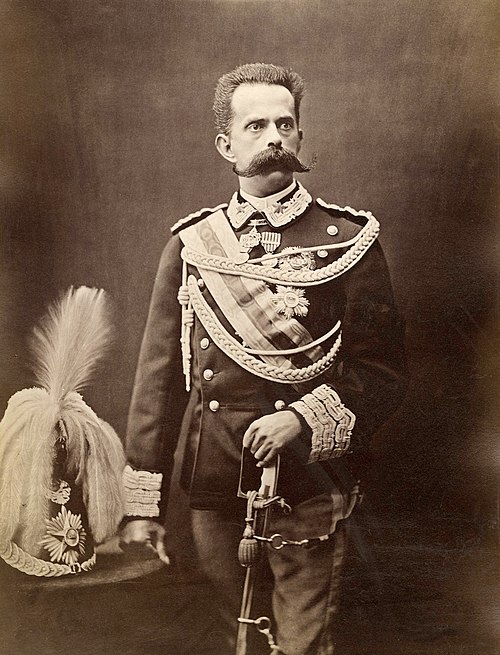
King Umberto I
1887
William Miles
William and Harriet Miles took over the business in 1887 having managed the business for John Grout and previously working for the Fitzgerald family as the coachman at Boulge Hall. Harriet succeeded in the business after the death of her husband in 1899 and subsequently it was passed to her son, William who was the landlord until 1922.
During this period, the horse dealing business continued but with the rise of the automobile, it became increasingly irrelevant for the business.
The rear of the property, called the Bull Ride, used to have stabling and has now been converted for business use and residential property. The stables once had capacity for over 170 horses.
During this period, the horse dealing business continued but with the rise of the automobile, it became increasingly irrelevant for the business.
The rear of the property, called the Bull Ride, used to have stabling and has now been converted for business use and residential property. The stables once had capacity for over 170 horses.
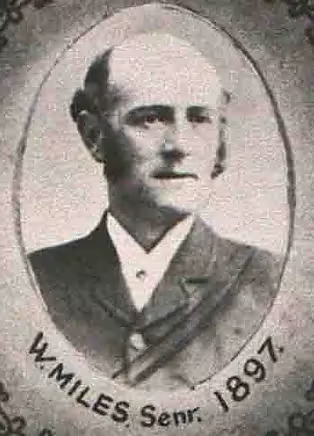
William Miles, landlord from 1887 to 1899
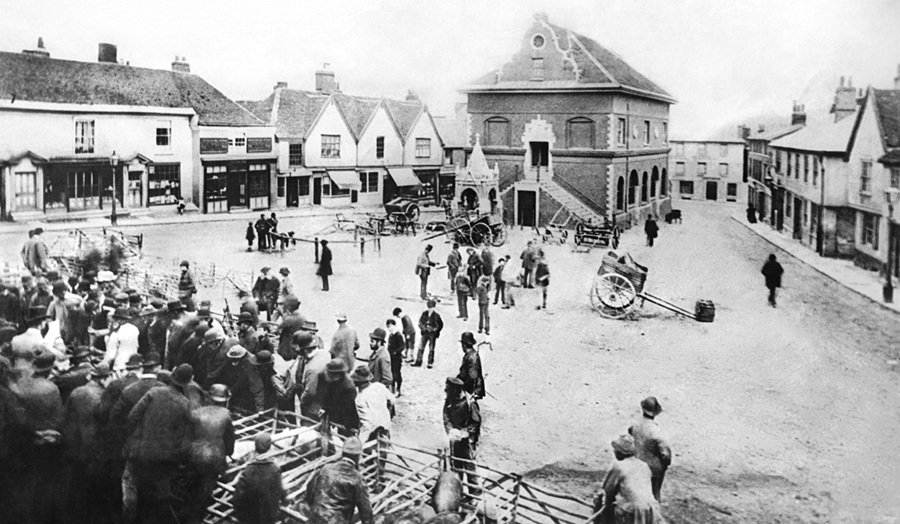
Market on Market Square 1890
1896
House of Savoy Coat of Arms
John Grout originally supplied horses to the King of Italy, Victor Emanuel II during the 1870's following visits to The Bull from his son, the crown prince, Umberto.
It seems a key facilitator in this relationship was the multi-lingual and educated Willie Miles Junior who toured much of Europe selling the horse dealing side of the business.
Following the death of John Grout and Victor Emanuel in the late 1880's, William Miles Senior purchased the business. William continued to run the horse dealing business with his wife, Anna, focusing on running The Bull. The Mile’s maintained the relationship with the now King Umberto I who continued to import livestock for the royal household.
After supplying horses to the Italian Royal family for over twenty years, King Umberto I granted The Bull the use of the House of Savoy Coat of Arms in April 1896.
It seems a key facilitator in this relationship was the multi-lingual and educated Willie Miles Junior who toured much of Europe selling the horse dealing side of the business.
Following the death of John Grout and Victor Emanuel in the late 1880's, William Miles Senior purchased the business. William continued to run the horse dealing business with his wife, Anna, focusing on running The Bull. The Mile’s maintained the relationship with the now King Umberto I who continued to import livestock for the royal household.
After supplying horses to the Italian Royal family for over twenty years, King Umberto I granted The Bull the use of the House of Savoy Coat of Arms in April 1896.
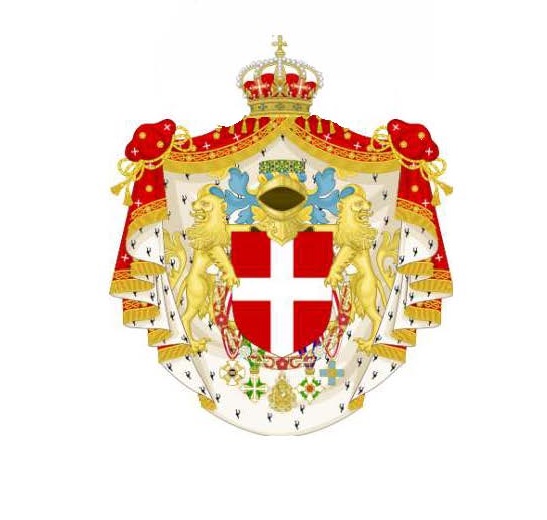
House of Savoy Coat of Arms
1900
Trains, planes and automobiles
With the arrival of the railway and later motor cars, the coaching trade declined, but The Bull adapted. Its stables were repurposed for horse dealing, becoming a successful venture in the Victorian era and continuing until the early 1920s.
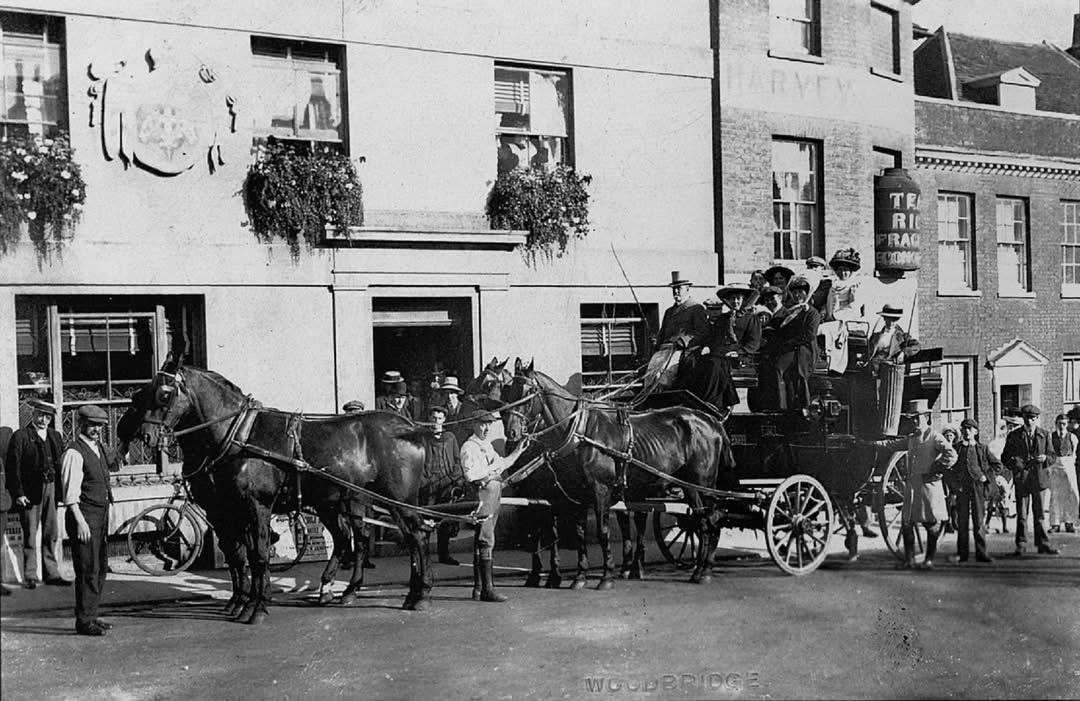
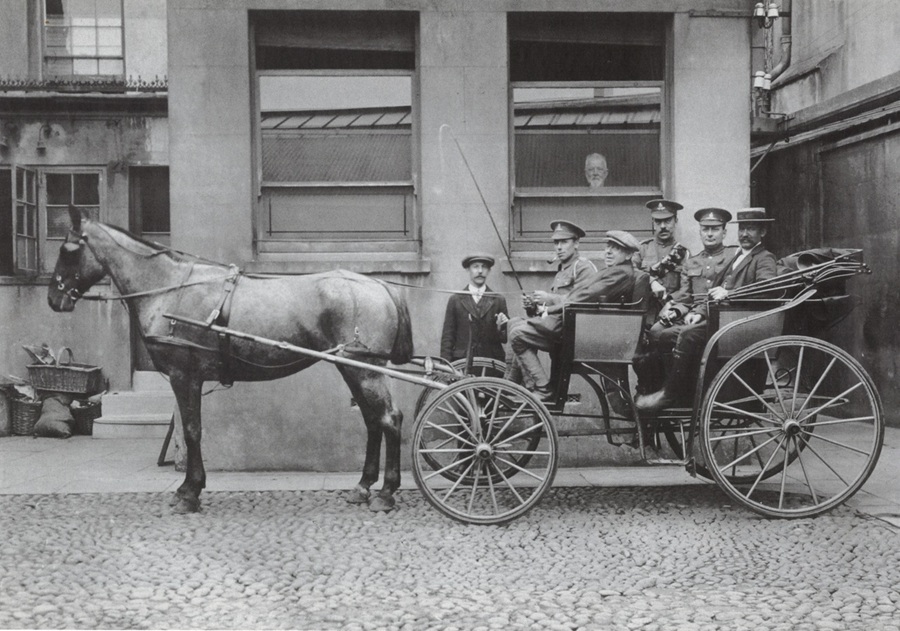
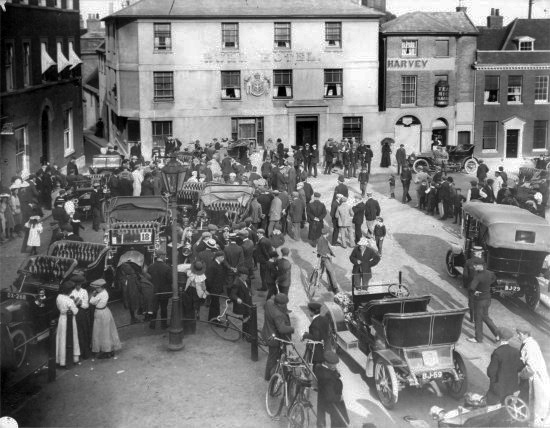
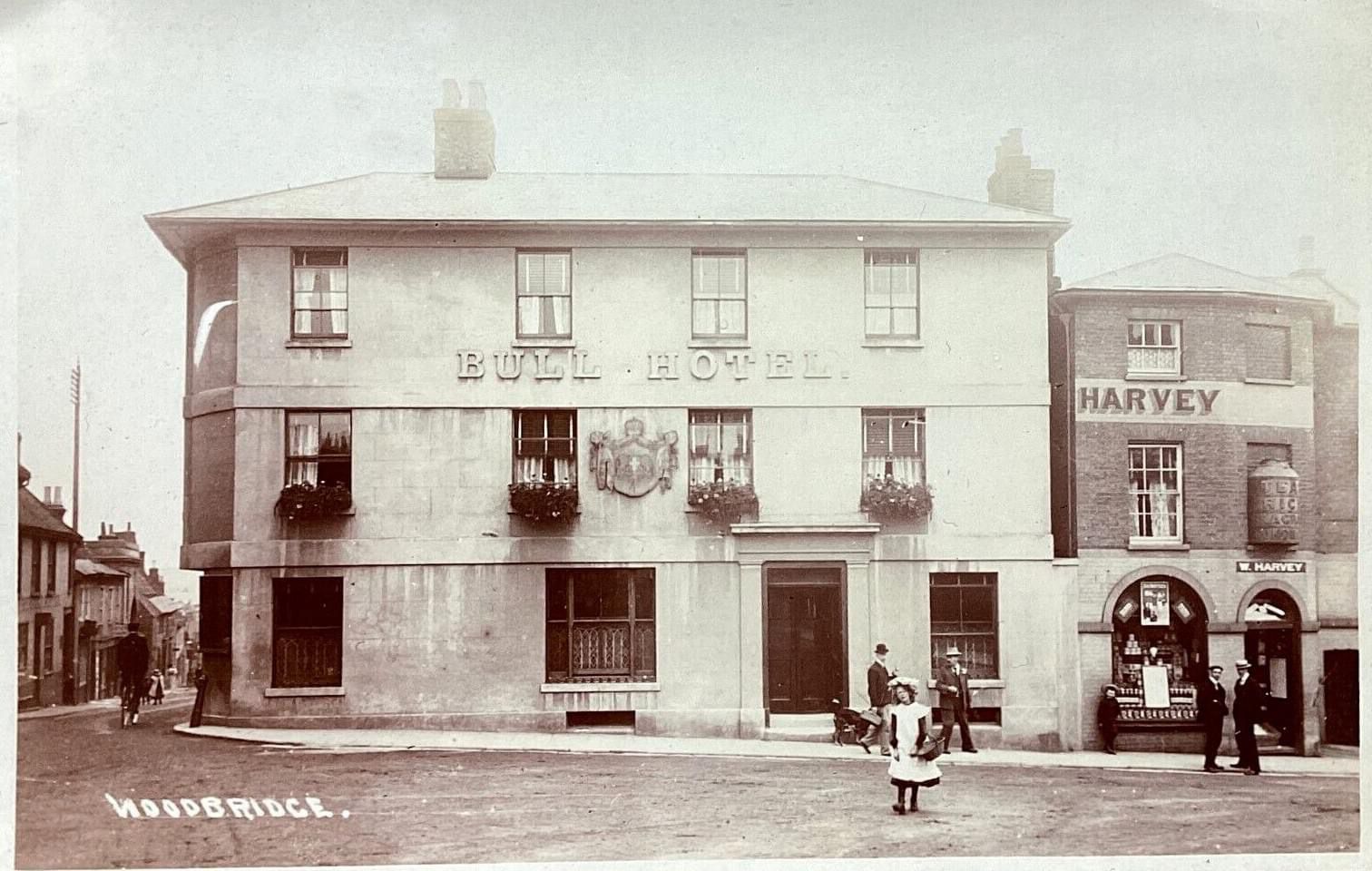
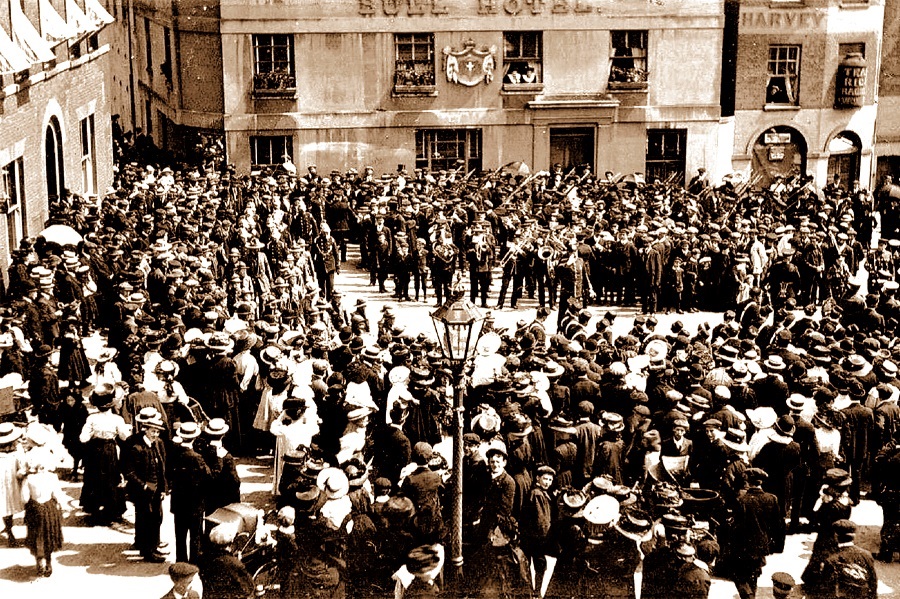
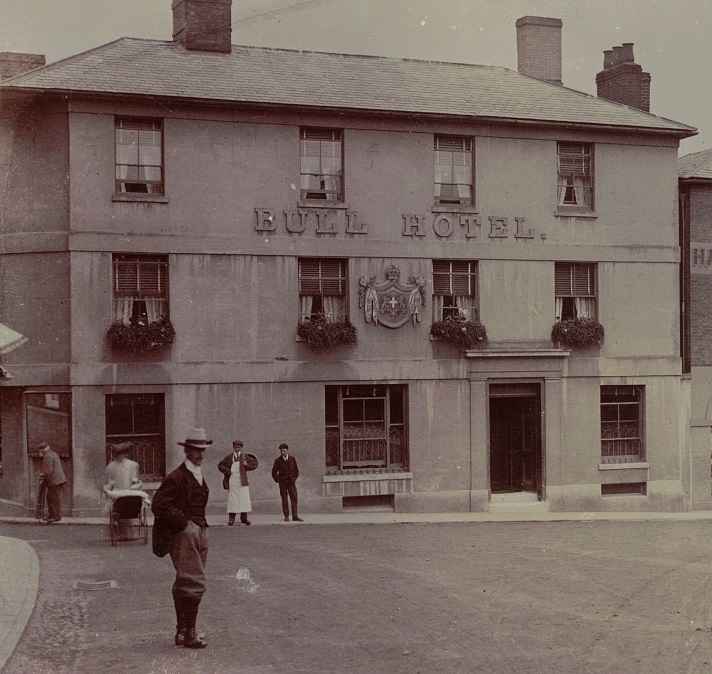
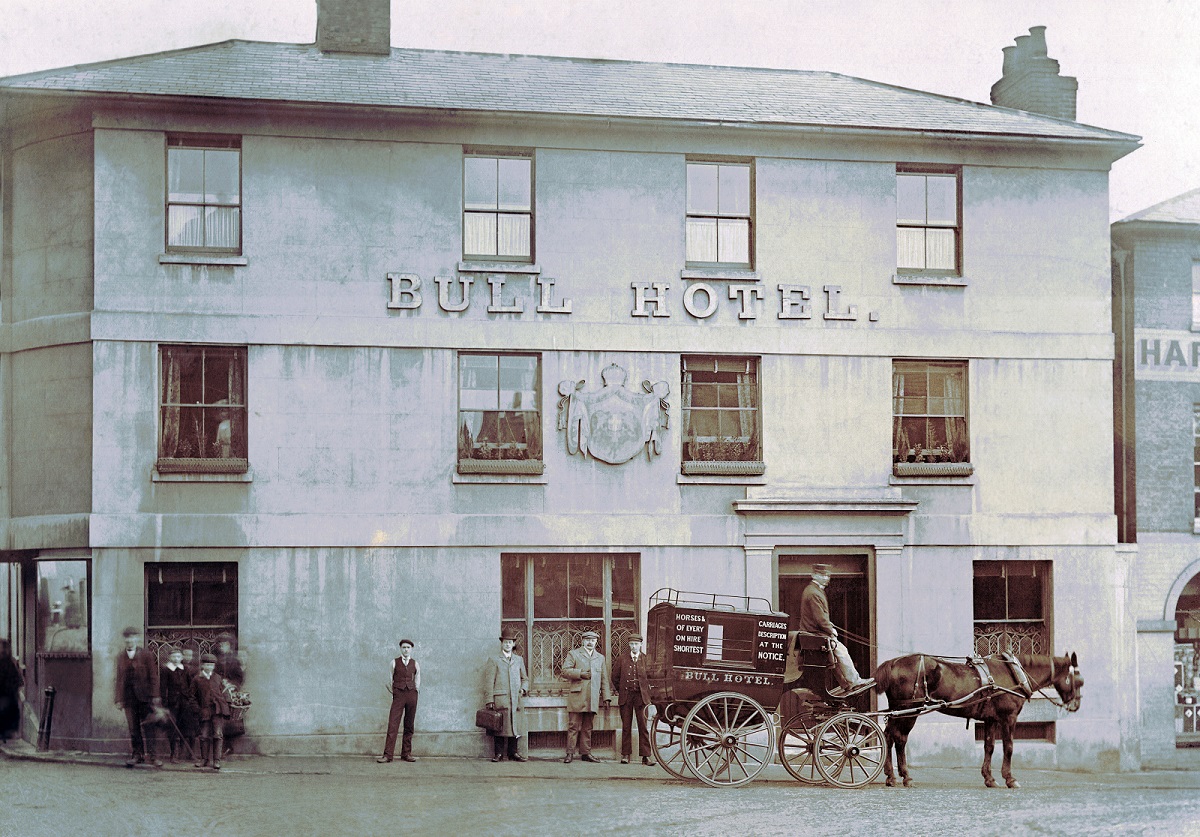
1939
The Dig
During the famous 1939 Sutton Hoo expedition, the archaeologist from the dig stayed at The Bull and often brought back finds for identifying and cataloguing before being sent on to The British Museum. The Bull has hosted some of the rarest and most priceless of archaeological finds in the British Isles.
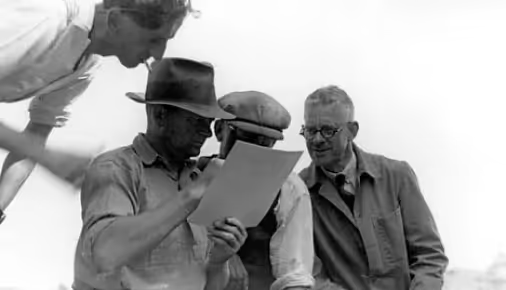
Archaeologists from the 1939 dig including Basil Brown
Late 1900s
World Wars and Army Bases
Like many historic buildings, The Bull saw quieter decades through the World Wars and subsequent austerity. The closure of several local army and UK/US air bases in the 1970s and 1980s had a notable impact on the local economy, and The Bull too felt the effects.
2000s
Woodbridge - Happiest place to live in the UK
However, the past decade has seen a remarkable revival. The growing popularity of Woodbridge as a visitor destination—helped by the international interest in Sutton Hoo, now drawing over 150,000 visitors annually—has brought new life to the town. Alongside this, major infrastructure investment such as Sizewell C has further bolstered the local economy. This is reflected in national surveys where Woodbridge is consistently voted as one of the best places to live (Sunday Times). In 2024, Woodbridge was voted the happiest place to live in the UK (Rightmove).
Today, Woodbridge is once again thriving, and The Bull stands proudly at its heart—a true Suffolk gem, where centuries of history meet warm hospitality.
Today, Woodbridge is once again thriving, and The Bull stands proudly at its heart—a true Suffolk gem, where centuries of history meet warm hospitality.
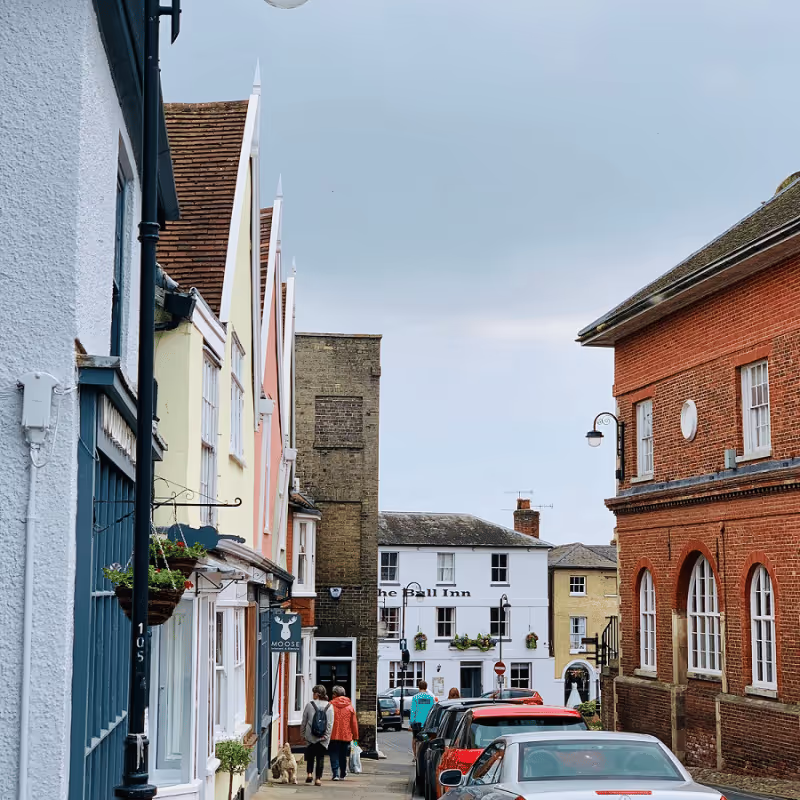
2019
-
Present
-
Present
Sarah and David Clarke
Sarah and David Clarke acquired Woodbridge’s prestigious and historic Bull Inn in March 2019, with plans to restore it to its former glory, making it a hub for the town’s social life.
Sarah is originally from New Zealand but has lived in the UK for the past twenty years mostly in London and working in the financial services world. Like many Kiwis, Sarah has a passion for sport and the outdoor life.
David is from Nottingham and having spent (too!) many years in an office, wanted to focus instead on his passion for great food and wine.
Most of Sarah’s family are back in New Zealand but her only brother married a Woodbridge girl and when The Bull came to the market, Sarah and David (rather naively!) jumped at the opportunity.
Sarah and David hope that their offering reflects the best of what New Zealand and England has to offer.
Sarah is originally from New Zealand but has lived in the UK for the past twenty years mostly in London and working in the financial services world. Like many Kiwis, Sarah has a passion for sport and the outdoor life.
David is from Nottingham and having spent (too!) many years in an office, wanted to focus instead on his passion for great food and wine.
Most of Sarah’s family are back in New Zealand but her only brother married a Woodbridge girl and when The Bull came to the market, Sarah and David (rather naively!) jumped at the opportunity.
Sarah and David hope that their offering reflects the best of what New Zealand and England has to offer.
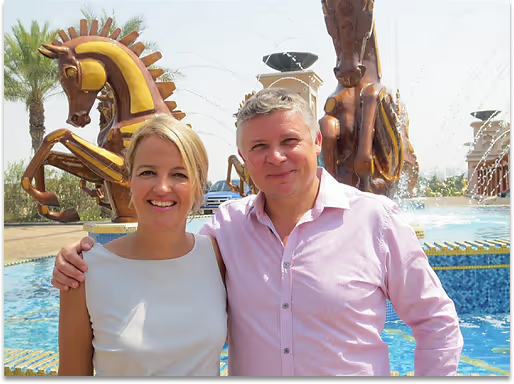
Sarah and David Clarke
Famous Guests
Umberto I
Vittorio Emanuele II, of the house of Piedmont and Savoy, became the King of Italy in 1861 was a frequent visitor to The Bull and a good friend of John Grout. The coat of arms adorned the front of The Bull for many years.
Winston Churchill
Winston Churchill stayed due to local military presence and early radar work at Bawdsey Manor.
Daniel Defoe
English writer Daniel Defoe, author of Robinson Crusoe, visited The Shire Hall and The Bull in 1734. Defoe was also into politics and economics, and with this in mind, he wrote about his tour of Britain as well as is interest in commerce and markets.
The Victorian Poet Laureate – Alfred, Lord Tennyson.
Along with Edward FitzGerald, Alfred Tennyson was also an alma mater of Trinity College, Cambridge where the two became friends. Tennyson was the Poet Laureate during much of Queen Victoria's reign and quite famous at the time. John Grout gave him a tour of his stables but was unaware of his fame.
"'Tis better to have loved and lost than never to have loved at all."
"'Tis better to have loved and lost than never to have loved at all."
Robert De Niro during filming of Elveden
Robert De Niro stayed at The Bull when filming at nearby Elveden Hall
.avif)
.avif)
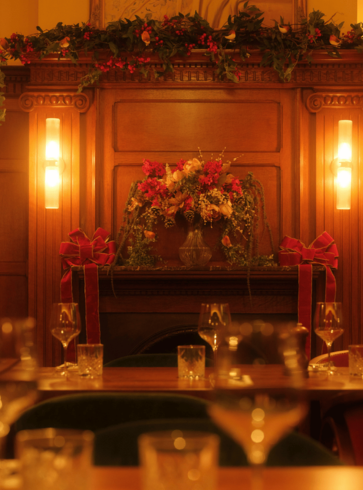
.avif)
